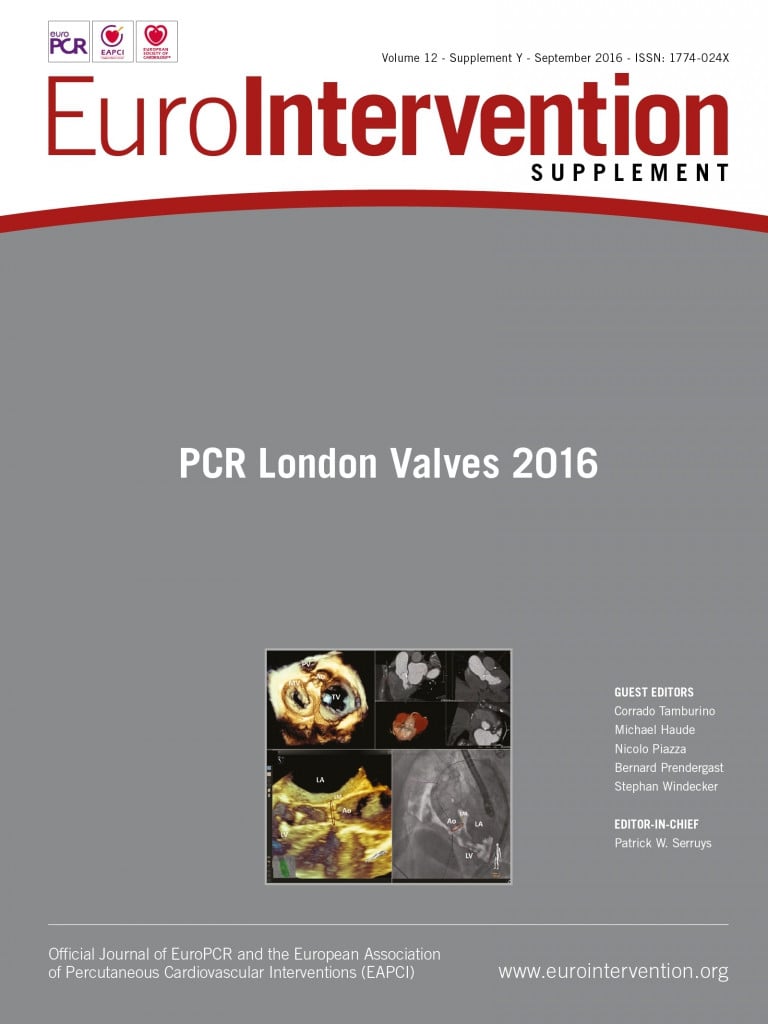Tricuspid regurgitation (TR) can be differentiated as primary (mainly due to infective endocarditis), as secondary or functional (due to annular dilatation and leaflet tethering as a consequence of right ventricular dilatation and remodelling). Although functional TR is broadly underdiagnosed, it is associated with symptoms of right heart failure, reduced quality of life and poor outcome. As a stand-alone therapy, surgical repair for functional TR is rarely performed because it is associated with poor outcome owing to patient comorbidities. Moreover, although concomitant surgical tricuspid valve repair is frequently considered in patients with functional TR who require surgical repair of other valves and/or bypass surgery, many are poor candidates for surgery on account of their prohibitive risk profiles. Therefore, novel transcatheter therapies have been developed in recent years to address the needs of patients with significant functional TR. This chapter of the EuroIntervention London Valves supplement summarises four currently available percutaneous catheter-based repair techniques and a fifth option of heterotopic valve implantation.
Rosser et al present the TriCinch™ (4Tech Cardio Ltd, Galway, Ireland) system, a transfemoral venous access device designed for tricuspid valve remodelling to reduce annular dilatation and prevent further right heart decompensation. The TriCinch™ system has two components: A) a stainless steel corkscrew implant, which is placed in the anterior annulus of the tricuspid valve in close proximity to the anteroposterior commissure, and B) a self-expanding nitinol stent that is deployed below the hepatic region of the inferior vena cava. Under transoesophageal echocardiographic and fluoroscopic guidance, the system allows gradual tension on the tricuspid annulus with reduction of annular dimensions and TR.
Puri et al describe the FORMA repair system (Edwards Lifesciences, Irvine, CA, USA), which consists of a foam-filled polymer balloon spacer advanced via the subclavian vein, positioned across the tricuspid valve and fixed at the right ventricular apex. Positioning of the spacer across the tricuspid valve reduces the regurgitant space and associated functional TR.
Schofer presents the Trialign device (Mitralign, Inc., Boston, MA, USA), which consists of three main components: A) an 8 Fr articulating catheter for wire delivery, B) a pledget catheter preloaded with the ventricular and atrial components of the pledget (size 4×8 mm), and C) a plication lock device used to perform the cinching, lock the sutures and maintain pledget position. After placing two pledgets in the annulus under transoesophageal echocardiographic guidance, a dedicated plication lock device fixes the plication to create a tricuspid annuloraphy.
Schüler et al describe use of the MitraClip® device (Abbott Vascular, Santa Clara, CA, USA), which is primarily indicated for the percutaneous treatment of primary or secondary mitral regurgitation but has also been recently used in small numbers of patients for the treatment of primary or functional TR.
Finally, Figulla et al present the concept of heterotopic placement of catheter-based valves into the inferior and superior vena cava for treatment of TR. The TricValve (P&F Company, Weßling, Germany) consists of two different self-expandable pericardial tissue valve designs on nitinol stent frames intended for implantation in the inferior or superior vena cava.
Each of these approaches is at an early stage of development with good results in highly selected patients. Numerous other innovative tricuspid devices are under investigation in preclinical models and this area of percutaneous valve intervention is set for considerable progress in the near future.
Conflict of interest statement
The authors have no conflicts of interest to declare.

